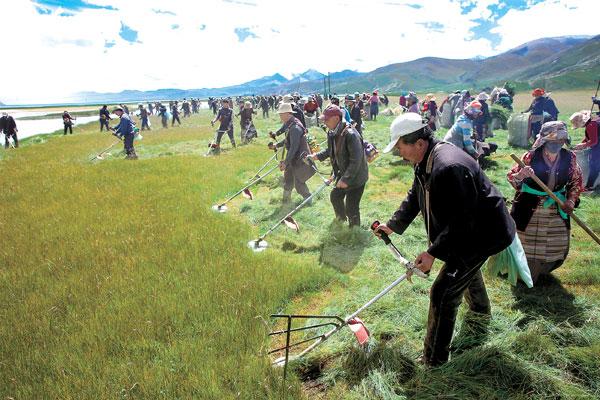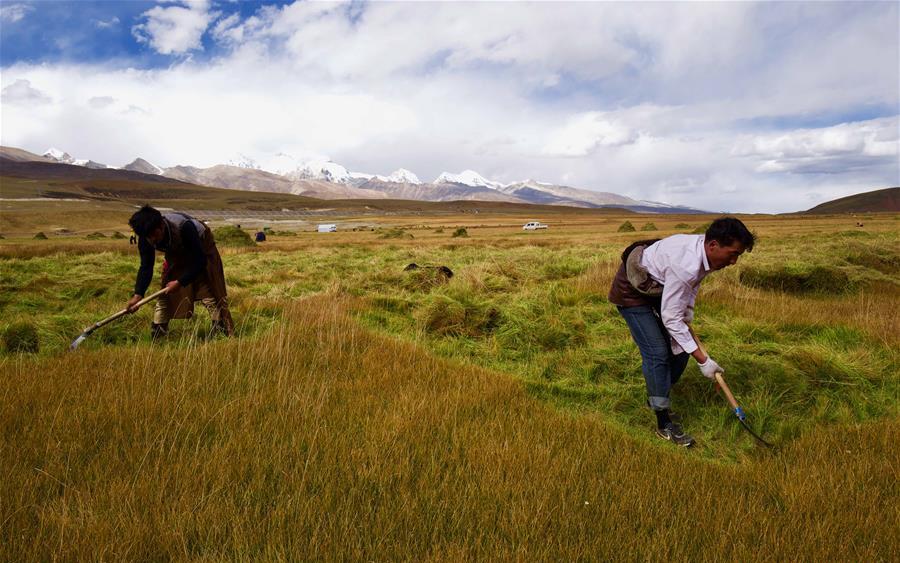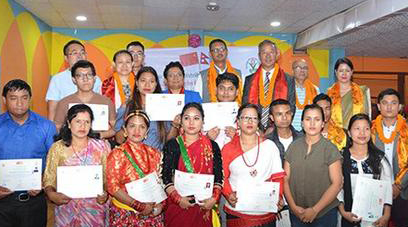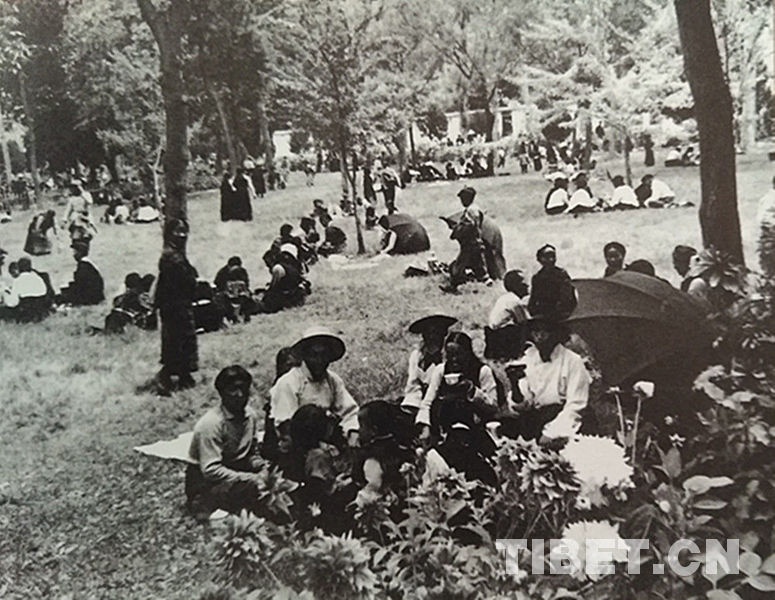Nepalese forage grass brings prosperity over Himalayas
A row of trucks full of green forage grass were particularly conspicuous in Sa'kya county, under the city of Shigatse in the Tibet autonomous region, as everything else was covered with thick white snow.
Fresh grass, mixed with corn, bran, soybean meal and salt, was processed into pellets to help tens of thousands of cattle and sheep get through the frigid winter.
The grass came from the other side of the Himalayas in Nepal's Chitwan, where flat plains and the pleasant climate provide a superior environment for grass planting.
In April, Tianyu International, a Shigatse-based agricultural investment company, invested over 17 million yuan ($2.4 million) in planting and purchasing Chitwan's grass. Over 400 metric tons of grass have been transported to Tibet so far.
Liu Wei, president of the company, said large shipments are expected before and after the Spring Festival, which will fall in January.
He said that thanks to the short growth cycle and high yields, the price for Nepalese grass is only 1.6 yuan per kilogram including the freight cost-cheaper than locally produced hay, which costs about 2.6 yuan per kg.
Liu said the total investment of the project will reach 90 million yuan. When the six bases that integrate forage grass production and processing are built, the annual grass output will reach 198,000 tons, creating jobs for 30,000 Nepalese residents.
Ramesh Dhital, 35, earns about 35,000 Nepalese rupees ($315) a month from selling forage grass from local farmers, three times his previous income doing part-time jobs. Farmers grow grass during the fallow season to make extra money from their land. An average income of 2,000 yuan is expected for each household.
In Shigatse, the incoming grass has also brought wealth to local Tibetans. Penpa, 33, earns 200 yuan a day unloading grass to a feed mill. He used to work in Nagchu and Ngari, cities far from his family. Now he works near home and earns more.
About 111,800 farmers and herders, including over 70,000 from low-income families, are involved in 778 grass processing and animal breeding cooperatives in Shigatse, partially thanks to Nepalese grass.
"With the coming construction of the Nepalese bases, Tibet's import of forage grass will soon increase, which will improve beef and mutton yields," Liu said.
Tibet Stories

Stories of Northern Tibet: a sheepskin coat on my mind
Karma is a typical Northern Tibetan.
Editor’s Choice
- Snow leopard and leopard photographed in Batang, Sichuan Province
- World's highest county included in State Grid electric coverage
- The 7th Beijing International Seminar on Tibetan Studies
- Contributions are welcome from you
- Symposium for anniversaries of China's Tibet magazine and China Tibet Online held







